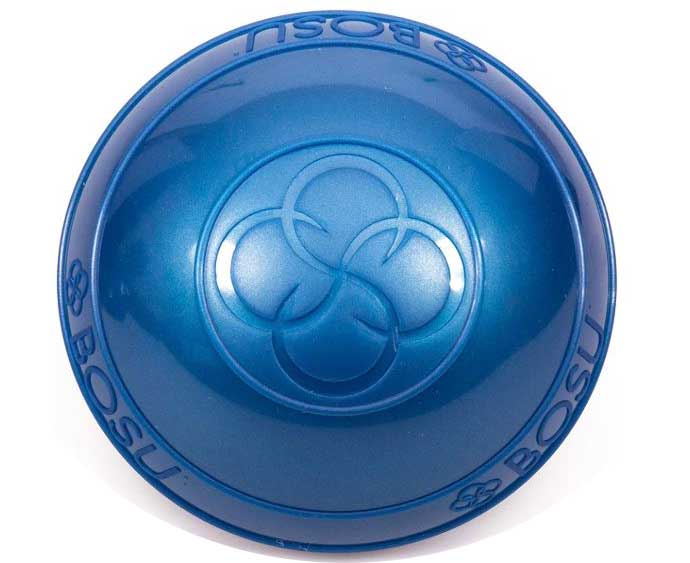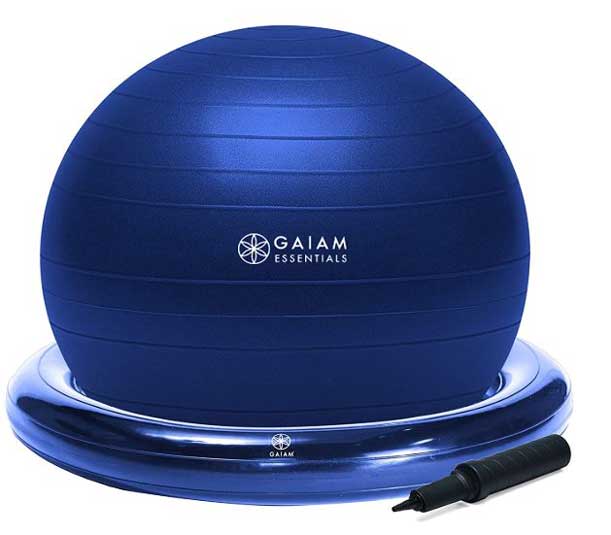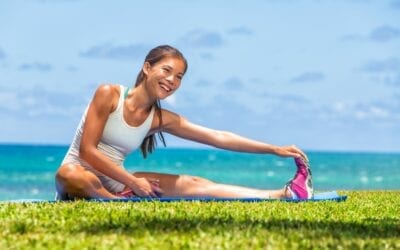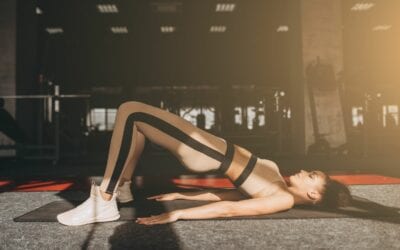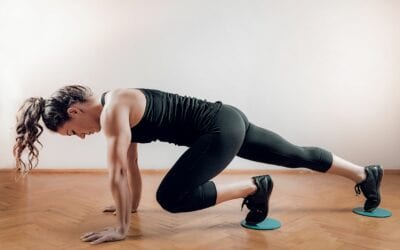Body Balance is an essential and crucial part of everybody’s life. Oxford’s definition of balance is “an even distribution of weight enabling someone or something to remain upright and steady.”
Body Balance and Fitness
We need to have some degree of balance as it is a fundamental daily survival skill. Without having to consider it consciously, your body system will set in motion from the time you wake up, start set in motion for sensors, ears, eyes touch, muscles, and brain. They will all interact seamlessly to keep your body balanced while you are doing activities, such as the basic things like standing up on your feet when you are getting out of bed to reaching for the coffee mug in the cupboard.
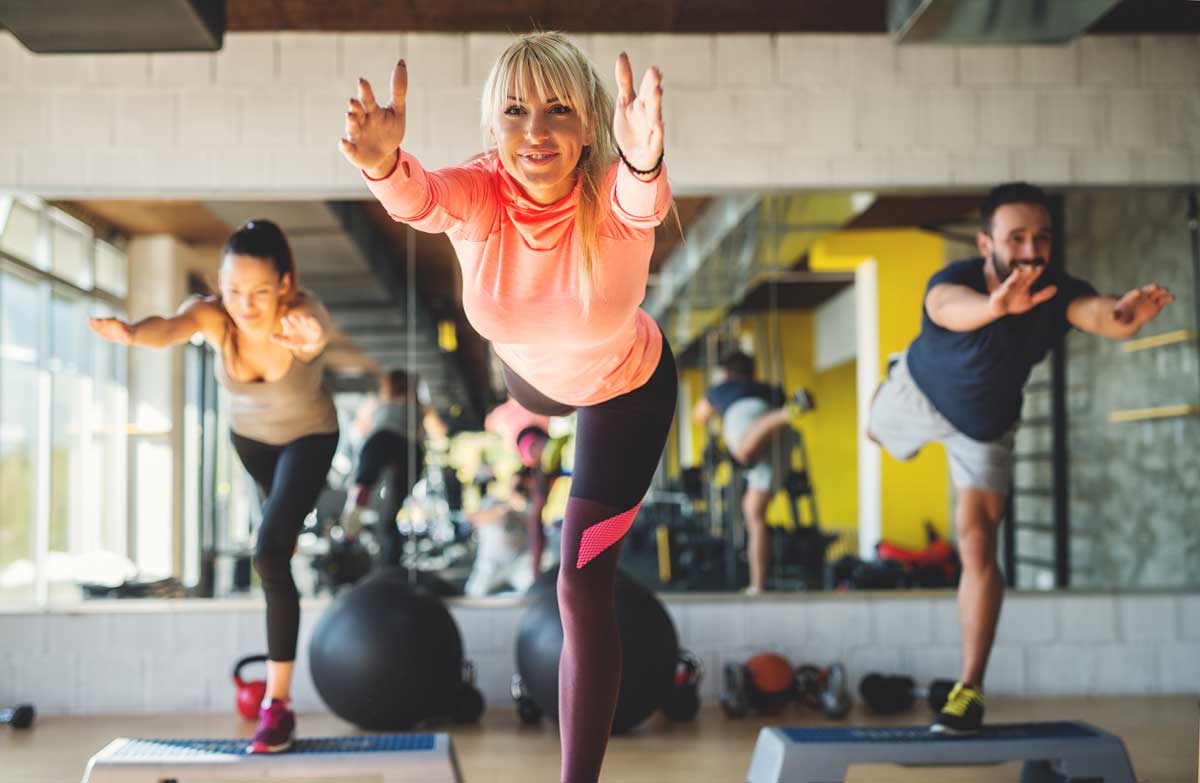
Children’s Body Balance
As children, we tend to be very active and unconsciously continuously learning to balance from playing on the park equipment, playing hopscotch, like climbing, play sports, and other games. Many of these activities help our body to build the necessary muscles and develop the senses that teach our sense of body balance As we grow older, we tend to stop doing physical exercises, which in turn, we lose muscles, gain weight.
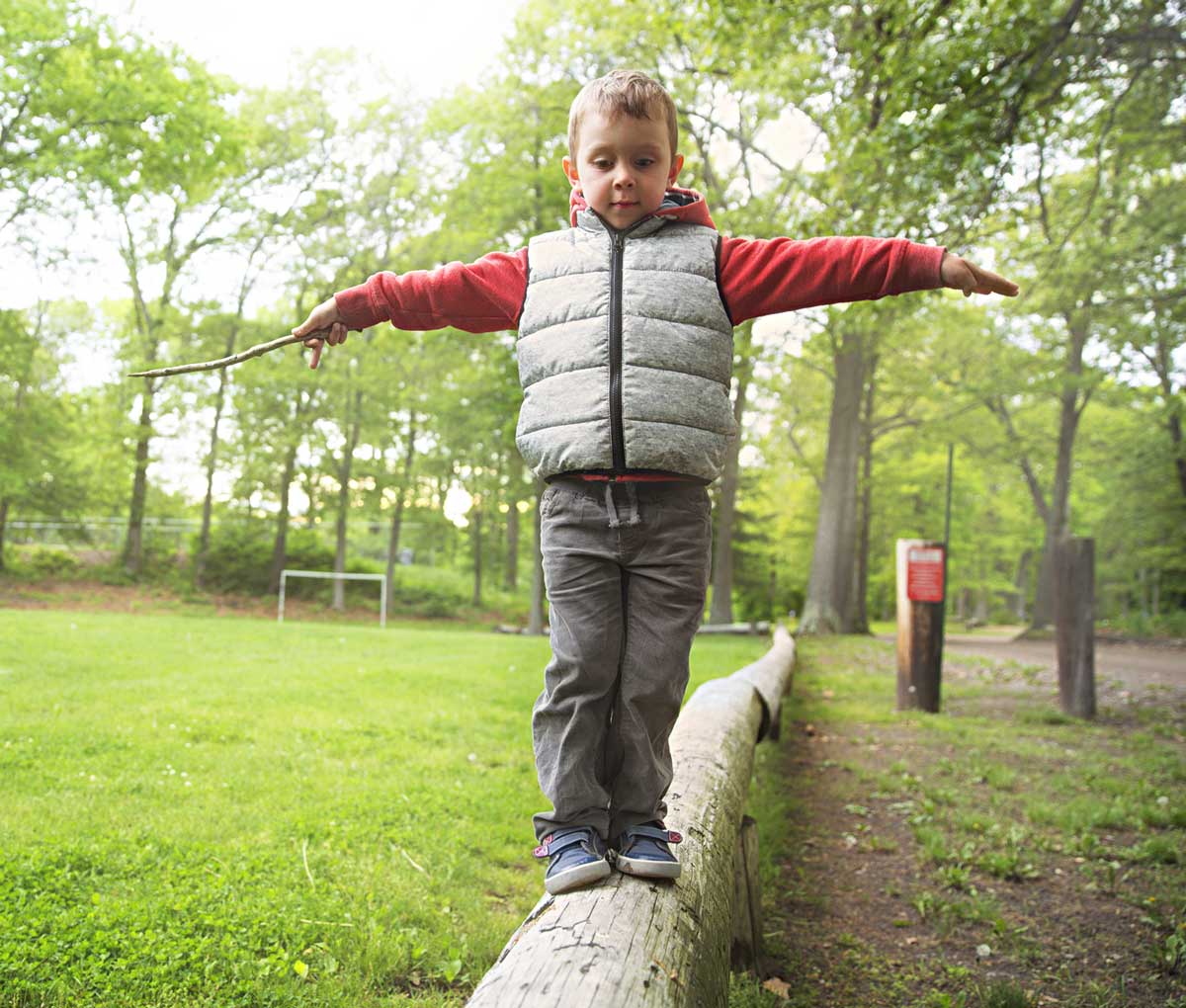
If we are not proactive, body balance can and will start diminishing.
What about Body Balance?
Body balance – equilibrioception is a separate human system and is cumulated through our complex set of sensory systems – sensorimotor control systems. The sensorimotor control systems include human sensory inputs from Body Balance – equilibrioception is a separate human system and is cumulated through our complex set of sensory systems –sensorimotor control systems. The sensorimotor control systems include human sensory inputs from;
- Sight- vision,
- Inner ears – the vestibular system
- Touch – proprioception
- Motion, equilibrium, spatial – vestibular system
- Space movement (proprioception)
The other key factor is the human motor system that coves muscle-skeletal systems and the central brain -cerebellum (the brain’s coordination center) that work together to provide over-all balance.
Eyes
Our eye-sight plays a vital part in body balance. This visual information provides spatial recognition data for your brain to a computer and sends it via your nervous system data. The eyes contribute to managing your muscles and joints to support the body balance. Try walking for some distance blindfolded on uneven ground and see how it impacts you.
Inner ear
The vestibule system (typically called the inner ear) is tightly integrated into the visual system to allow objects to be in focus while we are moving. The vestibular system is often referred to as the body balance. The inner ear, comprised of three semi-circular structures, is filled with fluid. This fluid provides information to the brain, along with the visual, to inform the brain motion.
Kinesthetic-
Nervous System – Spatial orientation allows your brain to know the 3-dimensions location and directions of any of your body parts.
Body balance is a perishable thing and diminishes very quickly for various reasons, including; illness, disease, lack of exercise, drugs, and the aging process. About 35% of people over the age of 65 have some serious fall each year with some cause permanent damage.
FACT: From the age of 30 our balance starts to deteriorate naturally
This can be prevented! Like most things in life, “use it or lose it.”
Practicing Body balancing without knowing about it
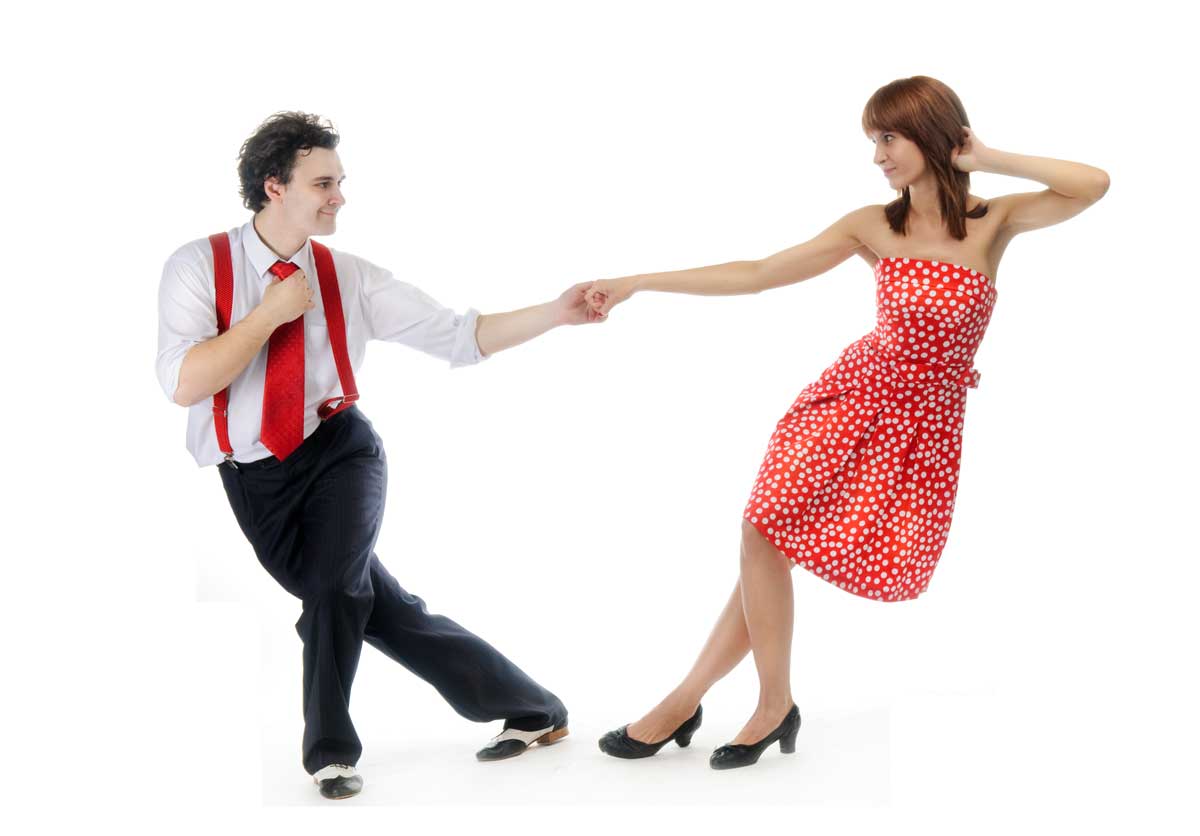
Why should we be interested in Body Balance?
- Allows you to undertake fun activities like bushwalking, rock climbing, dancing
- Maintain /improves over health
- Reduce and/or prevent back injury
- Reduces the pain from arthritis
- Significantly reduces the risk of falls and avoid injuries
- Improved agility
I am sure you can think of many more.
Body Balance Makes you Feel Good
My personal experience, I absolutely like partner dancing as it is a real buzz when we pull off some flashy cool moves that we have rehearsed for some time. This feeling or phenomena is described as to the “Felt Sense.”
The term “Felt Sense” describes how internal awareness is an increase in continual training. It is when there is a total connection between the mind and body. It is when your mind and body become attuned to each other.
Does age impact body balance?
We have a choice to reverse this.
Why does our Body Balancing reduces as we get older?
As we grow older, the more likely that we encounter health problems from Parkinson’s disease, mental derogation, heart disease, Alzheimer’s disease, Arthritis, Respiratory issues, Multiple Sclerosis, failing eye-sight, and side effects from medication. Notwithstanding these alignments, the three most significant problems for loss of body balance is;
- Reduction of strength/fitness (causing reactions times to decrease)
- Weight gain due to poor diet, and
- To a lesser degree, our eye-sight is not as good.
Numerous studies show there is an increase in the deterioration rate of body balance as we grow older.
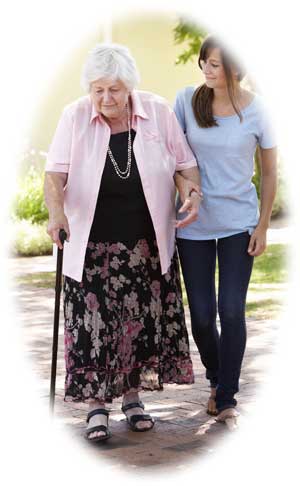
Body Balance One-Legged Test Results
The results are hardly surprising, as you can see in the table below. Where do you fit it?
| Age | Females Eyes Open (Seconds) |
Females Eys Closed (Seconds) |
Male Eyes Open (Seconds) |
Male Eyes Closed (Seconds) |
| 18-30 | 43.5 | 8.5 | 43.2 | 10.2 |
| 31-39 | 41.6 | 7.9 | 42.6 | 8.9 |
| 40-49 | 40.4 | 7.4 | 40.1 | 7.3 |
| 50-59 | 36.0 | 5.0 | 38.1 | 4.5 |
| 60-69 | 25.1 | 2.5 | 28.7 | 3.1 |
| 70 -79 | 11.3 | 2.2 | 18.3 | 1.9 |
| 80-89 | 7.4 | 1.4 | 5.6 | 1.3 |
You Can Improve Your Balance
You can take action to improve and maintain it.
Can body balance be re-learned?
An absolute “YES.”
There have been several studies that, with practice, strength build-up that body balance can significantly improve. Over 4000 people undertook this experiment over a 6-month period; there were some fantastic results. It was found, that;
- Injuries under the test sample reduced by some 30% against the normal
- The emotional wellbeing of people increased an average of 25%.
- Increase in physical activities more active enabling more fulfilled lifestyle
Body Balancing Test Body Balancing Test
The standing stork test to assess your body balance. The name of the test evident, as you can see in the picture. The Stork Body Balance test is performed by standing unassisted on one leg for as long as possible.
Test Instructions Preparation:
- Find an open area where you are can grab some to avoid falling when you are doing the test. A chair may not be sufficient as it may topple. Ideally in a doorway
- Find someone to measure the length of time you can balance.
- Remove your shoes and socks
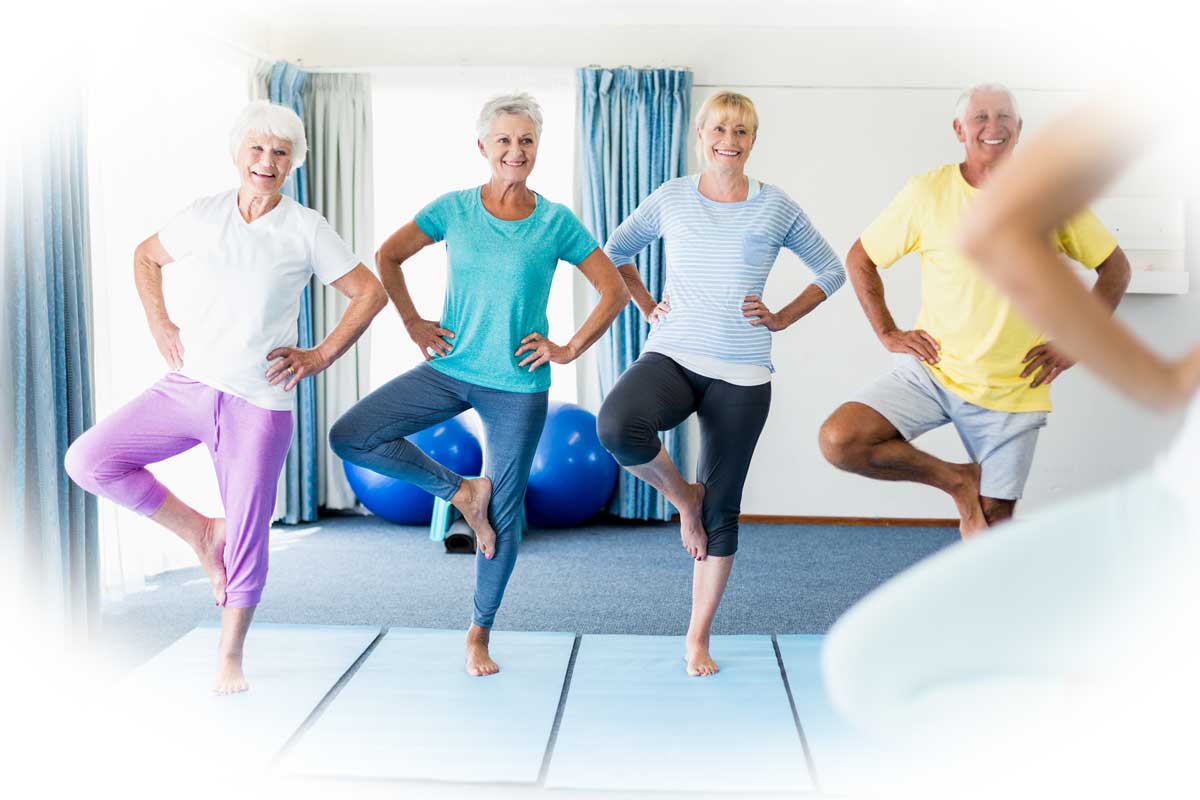
Stork Body Balance Test Positioning
- Stand upright with both feet on the ground
- Keep eyes open
- Place hands on your hip each hip, right hand on the right hip and left hand on left hip
- Lift either right or left leg.
- Place the sole of feet on the inside of the opposite leg (if possible), otherwise just raised.
- With the leg on the floor, raise your heel off the floor. The timing of the test commences as the above conditions are met.
Test Rules
The timing will stop if any of these are broken
- Hands come off the hips
- The heel or foot of the raised leg hits the ground
Test measurements
Conduct the test several times and take the best three results in seconds. For fun, see if the results are different for the other leg.
Repeat the test, but this time with eyes closed.
Body Balancing Test Results interpretation
We used a small sample of 200 people over a range of ages and fitness levels. Using the bell curve, we set the band as set the bands as shown in the table below.
| Eyes | Poor | Below Average | Average | Above Average | Excellent |
| Eyes Open |
<15 | 15-25 | 26-40 | 41-55 | >55 |
| Eyes Closed | <6 | 7=10 | 11-19 | 20-30 | >30 |
Poor- Typically older people who were inactive or either overweight or very fragile
Below average- slightly overweight, low level of strength and does not exercise
Average- Someone in good health but does not exercise
Above-average- Someone in good health and regularly exercises
Excellent- Very Fit, healthy people across all ages
Why bother about Body Balance?
Balance is an integral aspect of physical fitness because it improves the overall functionality of your movements. Any workout you choose to do, there will be a level of balance. Before you can progress to other regimens such as strength training, weight loss, or flexibility exercises, you need to work on your balance.
The key to balance is your core. It is a set of muscles that control your stability and posture. When you do other exercises that disrupt your balance, your body works twice as hard to keep you stable. But with a strong core, you can help you keep your body positioning and stability to maximize the gains of your other workouts.
Balance exercises are also an excellent opportunity to have more body awareness and focus. They can be added in warm-up routines to help get you started. More importantly, they can also be done anywhere, specifically in the comfort of your home
Dynamic and Optimum Body Balance
Many people misunderstood balance as it relates to your overall health fitness. Most would imagine a person doing a real balancing act as in parlor games — wherein one is trying to balance on one leg or avoiding to fall.
But there is more to balance.
Overall, balance is about keeping control of your center of mass or base of support. This is essential to many of your daily activities. If your balance is fine-tuned, you can do many day-to-day movements with relative ease.
However, if your balance is compromised, you’ll find it hard to move about, and this can lead to unnecessary strains and injuries.
Training this type of physical equilibrium is the point of dynamic balance. This helps with movements that are vital to sport-specific actions or daily activities. This is an excellent benchmark to achieve your fitness goals.
Optimal Body Balance
On the other hand, optimal body balance happens when your body’s position can have accurate information from multiple sensory systems as you make movements. The body has several balance perceptions in place from your skin (kinesthetic), inner ear (vestibular), and the eyes (visual). The feedback you get from these systems goes straight to your central nervous system to alert the activation of muscle groups needed for a movement.
All these sensory perception systems should be in top shape to achieve optimum balance. It’s not enough to just focus on static balance wherein the body is stationary in one place. That is relatively easy. The dynamic body balance will help you gain more control of your daily physical activity.
Outcomes Good Dynamic Body Balance
- Achieving dynamic balance will help several of your fundamental exercise forms. This type of balance can be beneficial to strengthening your hips, thighs, obliques, lower back, and glutes. An upgrade of your core muscles can help your coordination better because these essential muscle groups connect your pelvis to your spine.
- If you enjoy running for your cardiovascular workout, dynamic balance can help enhance your gait. Whether you are walking or running, you will need to keep your center of gravity balanced as you constantly shift your center of gravity in your belly button area.This can be seen with the swing of each foot as you move forward — there is a counterpoint of your arms swinging in a backward and forward motion. This movement of the back and pelvis can generate momentum for the forward approach of the body.
- Dynamic balance is an excellent addition to your warm-up routine as this can easily prepare your lower body strength or other action-intensive actions such as basketball, soccer, football, tennis, a lengthened run, and an obstacle course race.

- This can also act as a breather in between low-intensity bodyweight training or high-intensity interval workouts. The repetitions in dynamic balance training can be a good recovery routine.This can also supplement your schedule if you can’t make it to the gym, whether you need to rest or if you have an emergency appointment. This can easily keep you active during these lulls.
- Your capability for sudden directional changes and overall coordination can be significantly improved by dynamic balance. These upgrades are essential to reduce the chances of having injuries or accidental slippages.When appropriately trained, dynamic balance can be a reflexive response that you don’t need to control consciously. It should be a priority as necessary physical work.
- The way your body expends energy in the performance of movements can also be improved by adding balance exercises. It adds muscle strength and coordination. See immediate results if you consistently perform it for at least twice a week in one month.There will be better body awareness as your appendages have better proprioception or spatial orientation. This decreases the likelihood of injuries.
- Overall, the health benefits of dynamic training are encouraging, such as stronger and more stable joints such as shoulders, ankles, hips, and knees—better awareness to avoid falls or unstable accidents.It also leads to improved reaction times in the event of balance loss — there will be better awareness in establishing balance again right away. Our balance deteriorates through time. But if we are mindful of consistent balance training, we can improve our long term health.
- Besides the physical benefits, a study by Ann-Kathrin Rogge and her team observed that balance training might have an impact on the improvement of your brain’s cognitive functions. They studied forty healthy participants between 19 to 65 years old who were assigned to various balance and relaxation routines to see if this regimen can improve their memory and spatial cognition.Each group ran their exercises two times a week for three months. The balance training participants increased their balance performance and memory capabilities. A possible hypothesis here is that the vestibular system is engaged during balance training, and this can create stimulations in the hippocampus and parietal cortex of the brain.
Body muscles areas to focus on to improve body balancing
Certain areas of the body play a more critical role in balancing.
| Body Area | Description |
| 1. Core | The core, inner body muscles, are the most vital set of muscles for balance as it is where most of the body mass and weight exists. There core muscles help you do basic things like sitting upright to rock climbing. |
| 2. Legs | Having strong legs helps you control your upper body. By improving the strength, it allows them to manage the upper body weight and mass. |
| 3. Ankles | The ankles play a pivotal role will standing. Weak ankles are one of the most common causes for people to fall. |
| 4. Back | Closely aligned with the core muscles, the back needs to be sufficiently strong to the vertical and horizontal movements |
| 5. Arms | To a much lesser extent, the arms play a smaller part in helping in balance, though they can be used as counter levers to keep balanced. A bit like a tight rope walker. |
What type of exercise should you do to improve body balance?
Balancing exercises are for everyone, not just for the young and fit, nor the old and fragile. It should be undertaken by ages, sexes, physical, and mental capabilities. It can be fun and enjoyable and not a chore. You just need to make a part of your daily routine
The best type of exercise that helps body balancing is core, legs, and ankle strengthening exercises. There is no real reason to do flexibility, aerobic, or anaerobic exercises though it does help is not the critical area that needs to be focused.
Body Balance Exercise NOT EQUAL Body Building
When you think of strength exercises, don’t think of weightlifting exercises. The exercises that we are going to recommend later in this article are for the average person in the street. They are not physically draining, so you do not get out of breath. There are no demanding physical exercises required, like skipping or jumping or rock climbing. The exercises is meant to be performed slowly to allow you to learn body control.
Yes, some of the exercises can be intense, though that can be controlled by yourself. For example, some yoga exercises can be challenging to perform, though it should only do your own limit.
Easy to do at home Body Balancing exercises
All these exercises can be done safely in the comfort of your own home. All these exercises can be done safely in the comfort of your own home.
There is a range of commonly known exercise types that are ideal for to improve body balancing these include but not limited:
- Yoga
- Tai Chil
- Dancing
- Ballet
- Pilates
A study by the American Physiological that ballet dancers had a significantly better balance due to the regular balancing exercises. From this is it can be quickly drawn that any physical exercises that use a range of core and lower body exercises will significantly improve your overall balance.
Similarly, Havard Health Tai Chi has a similar improvement in body balance.
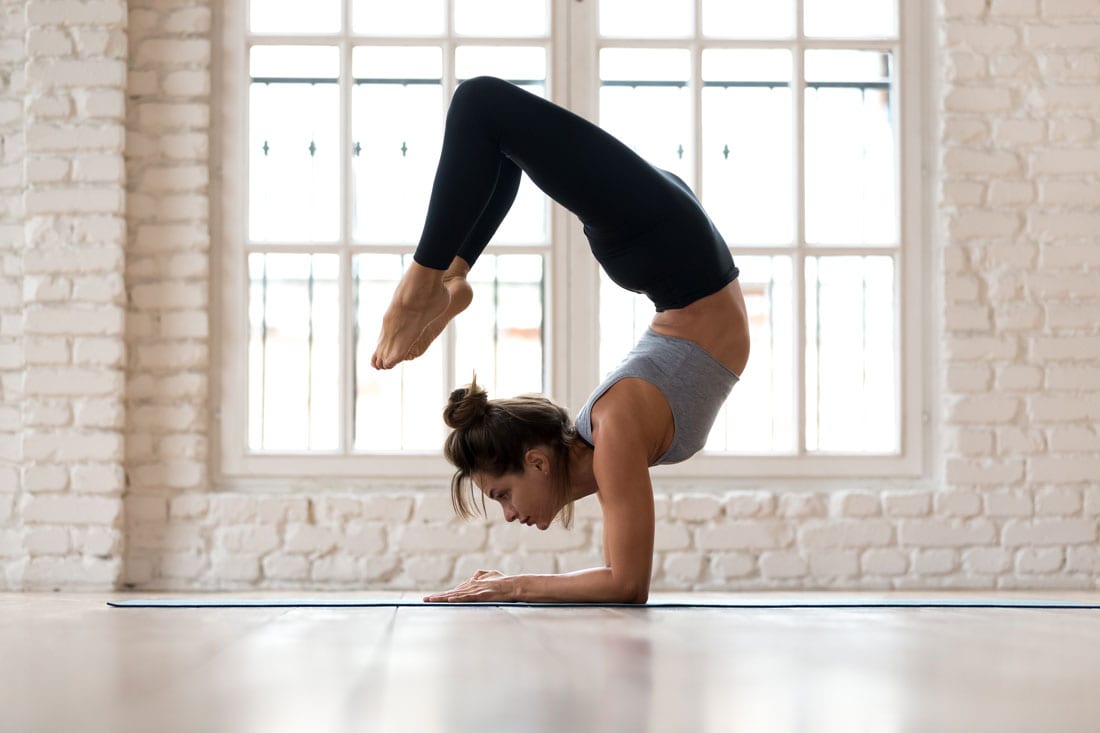
How often should I practice body balancing exercises?.
There have been studies shown that where people have been using balance boards over 6 weeks for 3-4 times per week for 6 -10 minutes a day, it has exponentially improved core stability, leg strength, and agility. How easy would that be for you at home?
Do I need any equipment for Body Balancing exercise?
Other balancing equipment that can be used at home that improves core stability, agility, and balance include the balancing pod, balance discs, and balance balls.
Balancing exercises anytime or anywhere.
Before providing specific body balancing exercises, you can do some simple integrated “lifestyle” exercises with impacting or reducing your daily time-schedule at all. The American Heart Association suggests balancing exercises should be incorporated as part of your regular exercise regime.
Some unintrusive exercises that you could do include:
- Stand on foot while brushing your teeth, or waiting in line at the supermarket
- Walk heel-to-toe around the house
Other essential elements in improving body balance
Even though physical exercise is essential to improve sound body balance, it is only one element that should be maintained. Other areas equally vital are having:
- Nutritious diet – Eating well provides a foundation for overall health
- Active lifestyle – Enables good blood through the body that is essential for your organs
- Healthy weight– does not strain your muscles
- Strength training—it’s not about muscle development, it about having sufficient strength to control and manage your own body
- Adequate sleep – It is well understood that tiredness is a notable element in having a stable balance.
- Alcohol in moderation
Body Balancing Exerices
The focus of the following exercises is on your balance. These are aimed at improving your stability, agility and core and leg strength/
Some of the added benefits of these exercises will tighten your midsections, abdominals, as well as your buttocks.
Here are ten basics and easy to do body balancing exercises that anyone can do at home. If you do have a medical condition, it is advised that you see a medical practitioner before attempting any exercises. Remember, always do it a safe place where should you fall, you do not hit yourself against any hard surfaces like a table. If you ever feel unsafe or it doesn’t feel right, stop immediately.
Your fitness should not stop with these exercises alone. Find out more about the benefits a healthy fitness lifestyle.
Exercise 1: One-Legged Balance
The one-legged balance exercise is the simplest but one of the best exercises to improve overall body balance. It is the foundation for all of body balancing exercises
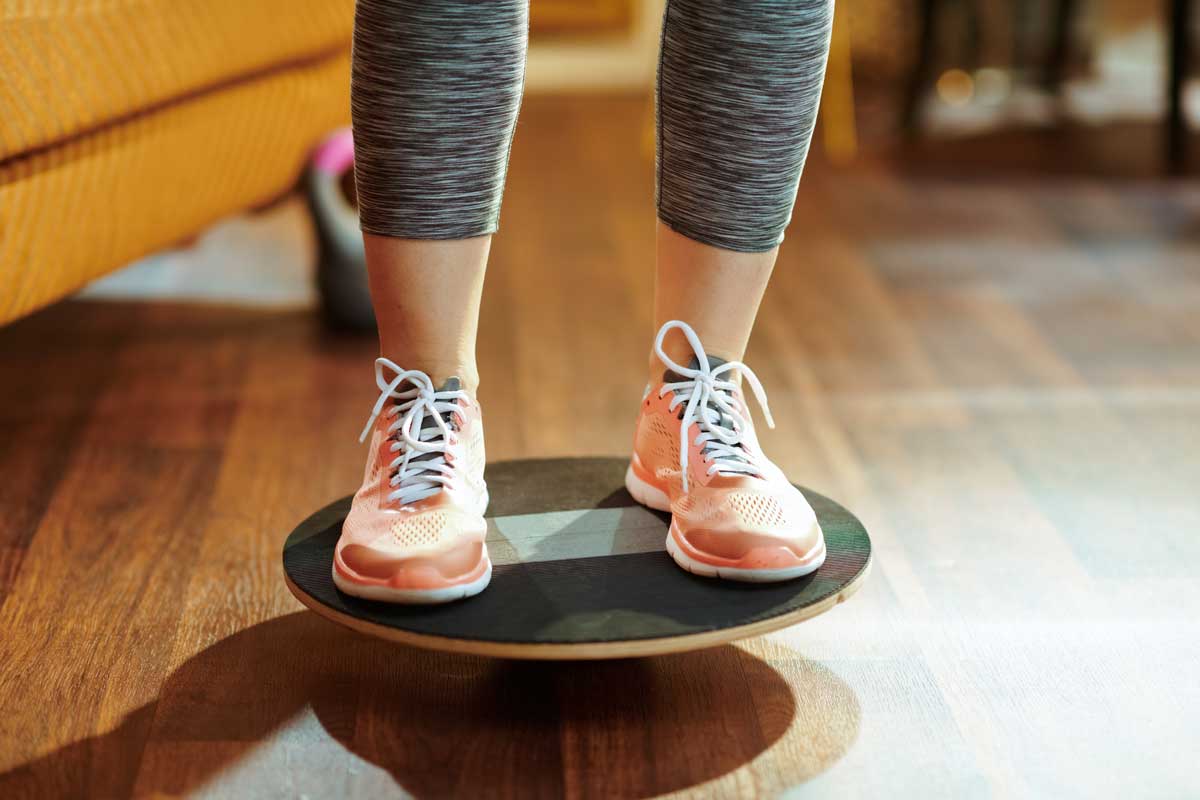
Step 1: Standing upright with both feet together
Step 2. Lift one foot off the ground
Step 3. Hold as long as you can
Step 4. Repeat at least three times for that leg.
Step 5. Repeat on other legs
Notes:
1. Remember, try to keep your torso as straight as possible.
2. Record how long you can hold the leg before getting off balance
3. When you feel comfortable, try with your eyes closed. Expect the time to be 30% of the open eyes.
Safety Tip: You may want to have a solid, stable chair next to you to avoid falling
Exercise 2: Leg Deadlift Swings
The Leg Deadlift exercise is the next level of difficulty. It does build up your core and buttocks exercise more than the one-legged balance.

Step 2. Lift one foot off the ground and move with a straight leg forward as far (and safe) as possible and hold for 2 -5 seconds
Step 3. Tighten your buttocks and swing the leg backward as possible and hold for 2-5 seconds
Step 4. Repeat forward and backward at least 5 times
Step 5. Repeat on other legs
Notes:
1. Remember, try to keep your torso as straight as possible.
2. If required, hold your arms up for additional balance.
3. Record how long you can hold the leg before getting off balance
4. When you feel comfortable, try with your eyes closed. Expect the time to be 30% of the open sights.5. For additional you can hold some hand weights
Safety TipYou may want to have a solid, stable chair next to you to avoid falling
Exercise 3 Side Leg Raise
The Side Leg Raise starts to help the balance in another dimension and helps your glutes get stronger.

Step 1: Standing upright with both feet together with arms to your side
Step 2. Lift one foot off the ground and move with a straight leg sideways as far (and safe) as possible and hold for 2 -5 seconds
Step 3. Bring back your leg to the upright position, avoid it hitting the ground.
Step 4. Repeat at least 5 times
Step 5. Repeat on other legs
Notes:
1. Remember, try to keep your torso as straight as possible.
2. If required, hold your arms up for additional balance.
3. Record how long you can hold the leg before getting off balance
4. When you feel comfortable, try with your eyes closed. Expect the time to be 30% of the open sights.
5. For additional you can hold some hand weights
Safety Tip: You may want to have a solid, stable chair in front of to avoid falling
Exercise 4: Two and One Leg Squats
A significant strengthening exercise. Leg strength is essential to have good body balance.

Step 1: Standing upright with feet at shoulder width and with arms to your side
Step 2. With your torso upright, slowly bend your knees and moving your buttocks towards the ground. Go down as far as you can and hold for 2-5 seconds
Step 3. Slowly rise – takes a few second to get to the upright position
Step 4. Repeat going down slowly.
Step 5. Do at least three sets of 10 up and downs
Notes:
- Remember, try to keep your torso as straight as possible.
- If required, hold your arms up for additional balance.
- Record how long you can hold the leg before getting off balance
- When you feel comfortable, try with your eyes closed.
- For additional difficulty
- Hold some hand weights
- Do squats on one leg
Safety Tip: You may want to have a solid, stable chair in front of to avoid falling
Exercises 5: Heel Raises
Often the ankles strengthening are missing. Runners are continually trying to strengthen the ankles as they are pivotal in improving running speed. Strong ankles provide the necessary support when walking and especially required when on uneven ground.

Step 1: Standing upright on a step ( or piece of wood) with feet at shoulder width and with arms to your side
Step 2. Lift your heels off the ground slowly and hold for 2-5 seconds
Step 3. Slowly drop your heels to almost touching the ground, and slowly rise again
Step 4. Repeat going up and down slowly for ten times
Step 5. Do at least three sets
Notes:
1. Remember, try to keep your torso as straight as possible.
2. If required, hold your arms up for additional balance.
3. For additional difficulty
1. Hold some hand weights
2. Do on one leg at a time
Safety Tip You may want to have a door frame to able to grab if necessary
Exercise 6 Lunges
Lunges are a good overall leg exercise that builds muscles from the ankle to the thighs and Quads. It requires concentration and balance.

Step 2. With one leg, reach far forward as possible and slowly lower your buttock towards the ground.
Step 3. Slowly raise and bring feet together
Step 4. Repeat with the other leg
Step 5. Do at least three sets of 10 lunges per leg
Notes:
1. Remember, try to keep your torso as straight as possible.
2. If required, hold your arms beside yourself for additional balance.
3. For additional difficulty hold some hand weights
Exercise 7: Walk Heel to Toe
The Heel-to-Toe is a perfect simple exercise that definitely helps your balance. It can be down anywhere.

Step 2. Place one foot directly in front of the other with the heel just touching the toes.
Step 3. Place the back foot directly in front of the other with the heel just touching the toes.
Step 4. Repeat for about 30 foot stapes
Step 5. Do at least 3 set
Notes:
1. Remember, try to keep your torso as straight as possible.
2. If required, hold your arms beside yourself for additional balance.
3. For additional difficulty close your eyes
Exercise 8 Tightrope Walk
The Tightrope exercise is similar to the Heel-to-Toe though slightly more complicated. It is intended to build leg muscles and improve balance as the center of gravity changes.

Step 2. Slowly with one leg steps forward, holding the knee up in the air for 2-4 seconds.
Step 3. Place the back foot on the ground.
Step 4. With the other leg slowly w leg step forward, holding the knee up in the air for 2-4
Step 5. Take approximately 20 steps and repeat 3 to 4 times
Notes:
1. Remember, try to keep your torso as straight as possible.
2. If required, hold your arms beside yourself for additional balance.
3. For additional difficulty close your eyes
Exercise 9: Balance Board


Step 2. With the other foot place it on the other side of the plank at the same distance from the center, do not push down yet
Step 3. Steady yourself and slowly put the weight of the high side of the planks. Keep placing weight until the place is balanced, and both sides are off the ground.
Step 4. Hold your balance as long as you can.
Step 5. Practice this for about 5-10 minutes
Notes:
1. Remember, try to keep your torso as straight as possible.
2. If required, have a chair in front of yourself to help the balance.
3. For additional difficulty
a. close your eyes
b. Replace the brick something thinner
c. Hold hand weights
Exercise 10: Balance on a Wobble Board
The next level of balance and agility is the wobble board. It will take time to master. It is very similar to the balance board but has a third dimension. This exercise is ideal for building the ankle’s strength, reflexes, and agility.
The wobble board is very unstable, and you can easily hurt yourself. For this reason, this recommended for those people who already have reasonable body balance. We recommend if you have never used the wobble board, start with the basic level and followed bt the advanced level.

Basic level: Require a sturdy chair and wobble board
Step 1: With hands on the chair and your torso slightly bent, place both feet on the wobble, one on time.
Step 2. Slowly get the feel of the wobble board
Step 3. Slowly raise your torso in the upright position
Step 4. Shift your weight every so slowly side-to-side and get the feeling
Step 5. Shift your weight every so slowly back-to-front get the feeling
Step 6. Do this exercise three times for 2-3 minutes each time.
Advance level: Require Wobble board
Step 1: Place both feet on the wobble, one at time.
Step 2. Slowly get the feel of the wobble board and balance
Step 3. Do this exercise 3 times for 2-3 minutes each time.
Notes:
1. Remember, try to keep your torso as upright as possible.
2. For additional difficulty
a. Close your eyes
b. Do squats
c. Shift both arms to one side
d. Be close to a wall and with a round ball throw it against a wall
Final Say in Body Balancing
It is possible to reverse the trend with a healthy lifestyle and some moderate exercises, and they can be fun, you can improve your body balance. The benefits are apparent—so no need to delay your start.
I do hope you enjoyed this article. Let us know how you go with the exercises.
It is possible to reverse the trend with a healthy lifestyle and some moderate exercises, and they can be fun, you can improve your body balance. The benefits are apparent—so no need to delay your start.
I do hope you enjoyed this article. Let us know how you go with the exercises.
Other Articles you may like.
Hamstrings and Calves Stretch
Often hamstrings and calves can become tight as a result of poor posture, always sitting down as a result of our inactivity sedentary lifestyle. This lifestyle shortens the gip flexor muscles cause the hamstrings to tighten.
Abdominal Ball Crunch with Twist
The Abdominal Ball Crunch with Twist requires controls and strength to undertake. The ball provides lots of lateral movement that requires the core intelligence to work. This exercise helps tone the tummy muscles as well as strengthening your spinal muscles that will...
Ab Hip Raise
The Abdominal Hip Raise, Ab Hip Raise, or often referred to as “The Bridge” is designed to strengthening the core abdominal muscles and Quads. These muscles support the lower back, spine and help with your posture. Find out more.
You may like these articles
Ball Crunch
Improve your tummy muscles by up to 40 % more by doing Ball Crunch rather than the standard Crunch as well saving your spine.
Ab Slider
The Ab Slide is a great way to tone lots of different muscles. It is not as easy or simple to do as it looks. It works a lot of muscles and requires coordination.
Seated Neck Stretch
One of the most common issues for people who work in offices is the tight and sore neck muscles. This standing or seated neck stretch provides people some relief, the tight and sore muscle in the shoulder, neck, and the back of the head. The standing or seat neck stretch can be even done lying down.
Read on for more

